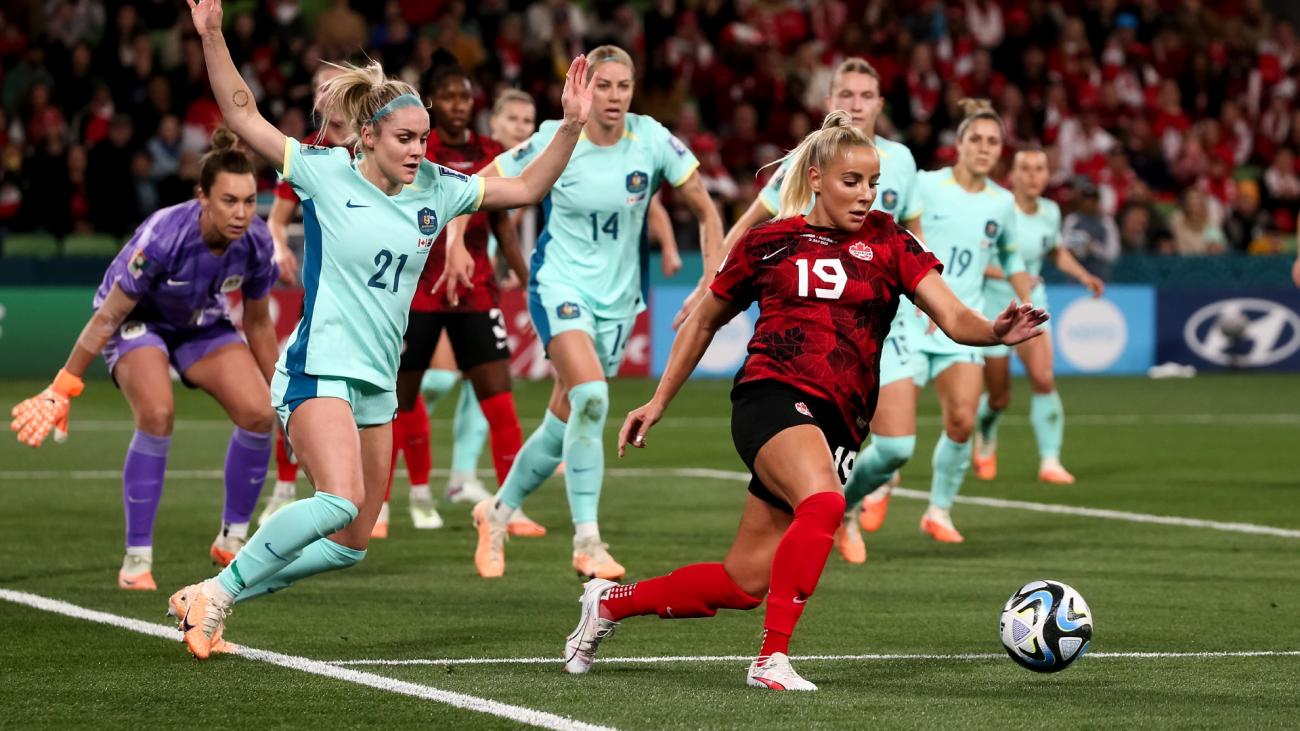Epidemic of ACL tears in female soccer players goes beyond biology
Over 25 of the world’s top female soccer players are missing the 2023 FIFA Women’s World Cup because of anterior cruciate ligament (ACL) tears, including Canada’s Janine Beckie.
Female athletes are two to eight times more likely to tear their ACL compared to males, and their odds of returning to sport within five years are 25 per cent lower. If we trust the research, we should brace ourselves for two to three ACL tears during the World Cup itself.
Greater awareness of the ACL epidemic in women’s soccer is shedding light on gender disparities in sport and highlighting the need for immediate action to create a more equitable playing field.
Dreaded aftermath of the ACL tear
The ACL is a thick band of connective tissue found in the middle of the knee joint. It plays a vital role in controlling knee joint motion and telling the brain about knee position.
ACL tears typically happen with movements that involve pivoting and quick changes of direction like pressing or tackling. People usually feel or hear a pop when they tear their ACL and experience significant joint swelling within a couple of hours.
For athletes, the treatment of an ACL tear involves physical therapy, exercise or surgery, where the ACL is reconstructed using a piece of tendon harvested from the quadricep or hamstring muscles. Under ideal conditions, recovery from an ACL tear takes nine to 12 months.
Unfortunately, 30 per cent of female athletes who tear their ACL do not return to sport, and even if they do, 15 per cent experience a re-tear. Even after treatment and returning to sport, people that tear their ACL are six times more likely to develop early onset osteoarthritis, a degenerative joint disease characterized by pain and loss of function.
Greater risk for female athletes
While past research has focused on differences in anatomy, biomechanics, and monthly hormonal cycles, these biological factors do not paint a complete picture of why female athletes tear their ACL more than their male counterparts.
The environments in which female athletes learn and play sport also contribute to the risk. The gender stereotypes that permeate sport often undervalue females’ athletic abilities, which can lead to fewer and inferior opportunities and resources. For example, at the 2021 NCAA March Madness, male athletes had access to a full gym, while female athletes were provided with a few light dumbbells and yoga mats.
Girls and women with muscular and bulky body types are seen by some as unattractive, which can also impact access and enthusiasm for weight training. This gender stereotyping is a problem because weight training is important for preventing ACL tears.
The rapid professionalization of women’s soccer has also led to higher physical demands on female players and an increased risk of injury. However, the sporting environment hasn’t kept up, lacking resources, facilities, and coaching tailored to meet the needs of female athletes.
Shorter, condensed seasons with match congestion combined with limited strength training programs — and in some cases limited access to skilled coaches and medical teams — further contributes to the ACL problem.
Addressing the epidemic
Solving this problem requires every member of the soccer community. To begin with, investing more resources and expertise into women’s soccer is crucial. This means a national professional league, pay and resource equity, investment in long-term welfare, and prioritizing training opportunities for female coaches, trainers, and medical staff.
There is also an urgent need to fund research focused on female health, injury prevention, and long-term health. This research should be conducted collaboratively with players, coaches, and sport federations so that everyone has an invested interest in acting on the findings.
We know that injury prevention warm-up programs can reduce the number of ACL tears and despite flashy misleading headlines there is no evidence that contraceptives decrease the risk. Every single female athlete who plays soccer, from the grassroots to professional levels, needs this knowledge so they can make informed decisions.
To foster lasting change and promote the health and success of female soccer players, we must confront the gender inequities that have long persisted in the sport. By showcasing the talents of female athletes in media, we can challenge gender stereotypes, demonstrate that female athletes are not lesser than their male counterparts, and create more opportunities for growth.
Only through collective effort and a commitment to addressing all the root causes of ACL injuries in female athletes can we build a future where all athletes have an equal chance to excel in the beautiful game.![]()
Jackie Whittaker is an Associate Professor at the Department of Physical Therapy at the Faculty of Medicine at the University of British Columbia; Christina Le is a Physiotherapist and Researcher at the University of Alberta; and Linda Truong is a PhD Candidate in Rehabilitation Sciences at the University of British Columbia.
This article is republished from The Conversation under a Creative Commons license. Read the original article.
![]()
































